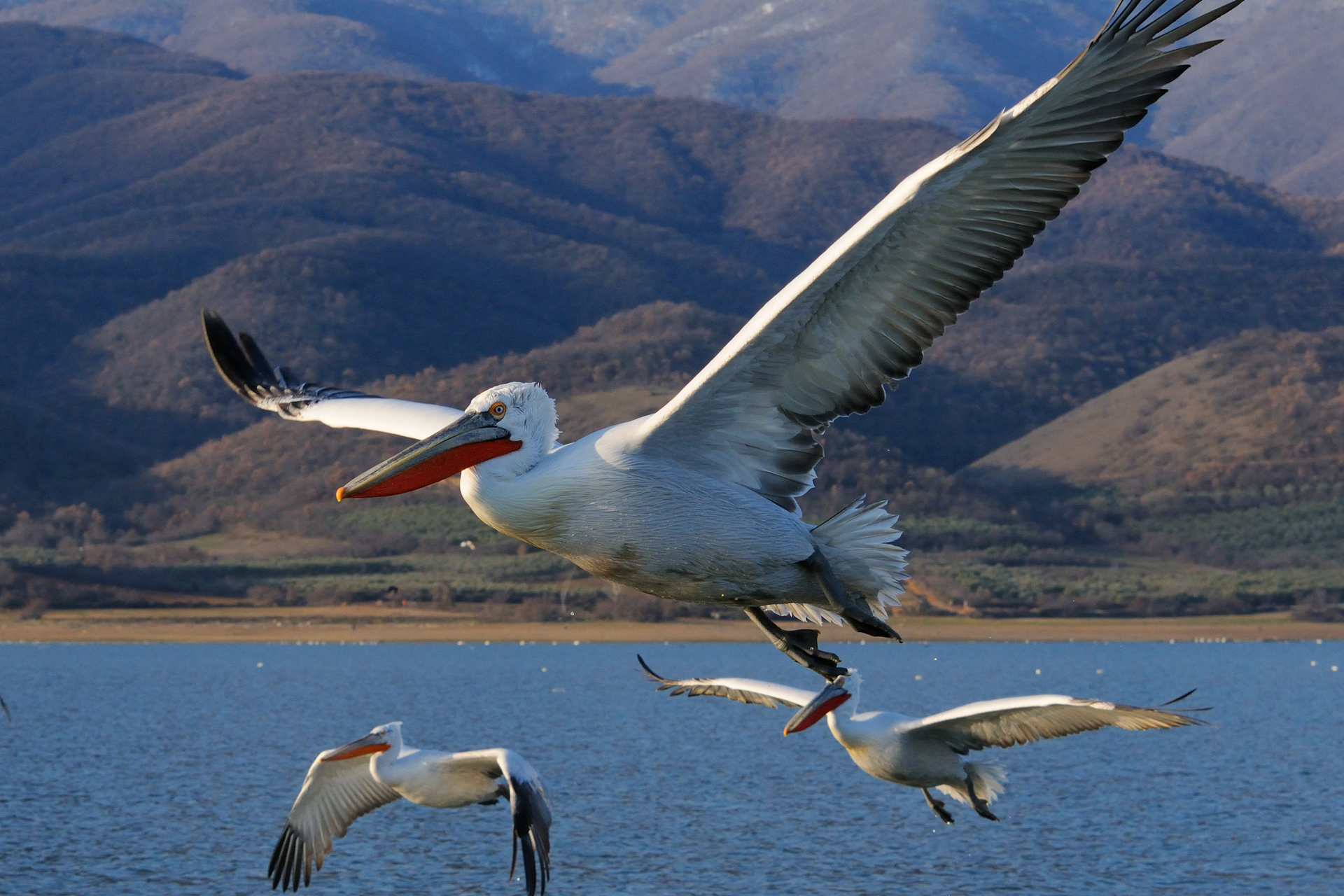Not everyone knows that in Northeastern Greece, on the border with Bulgaria, there is a reservoir that represents a real paradise for birdwatching and nature photography, the Lake Kerkini. Result of the damming of the Strymónas River, which occurred in 1932, this lake over the years became one of the most important wintering sites for the Eastern European birdlife. It hosts as well, throughout the year, an important number of Dalmatian Pelicans, undisputed attractions for everyone visiting Kerkini.
Last February we re-proposed our winter tour focused on this area rich in biodiversity (which we also do love in spring when it is rich in migratory and nesting birds but also in amphibians and reptiles) and the emotions did not lack!
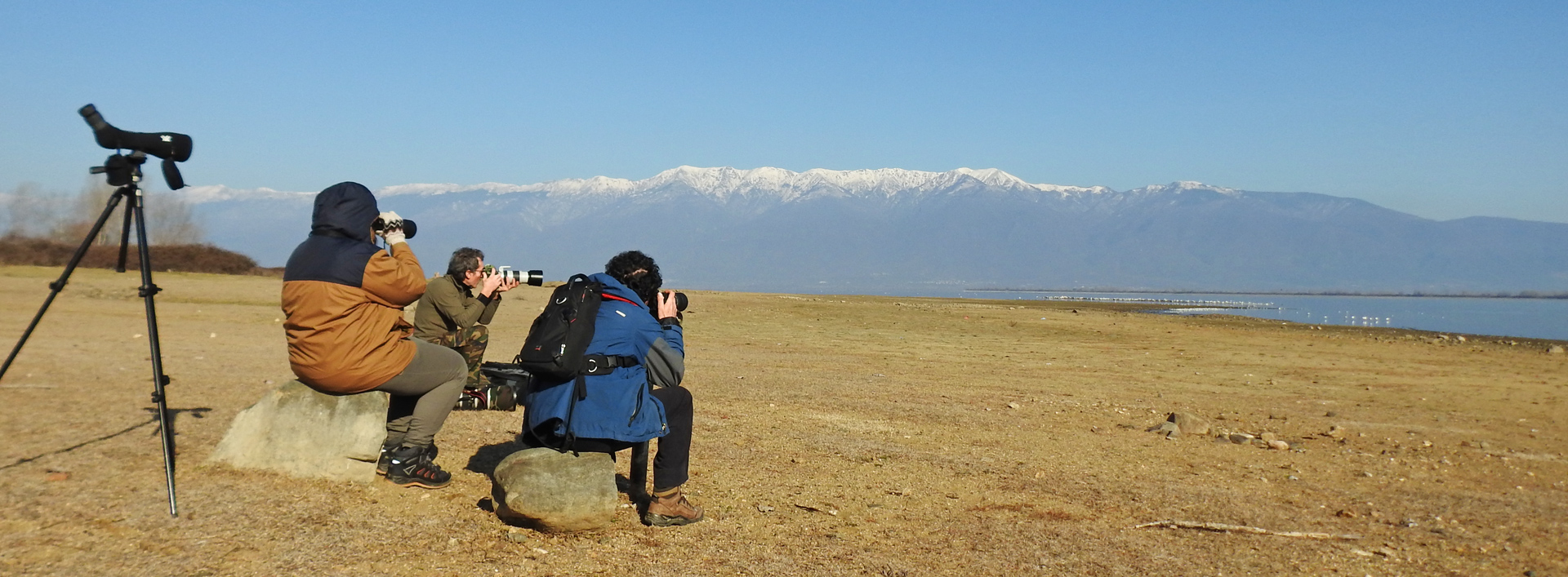
DAY 1
Landed in Thessaloniki in the early afternoon, we head north. The time to pick the rental off-road vehicle, buy some food to nibble on the road and we go: direction Lake Kerkini National Park!
After about 1 hour and a half we reach the southern bank of the reservoir. Here we spot about 20 Dalmatian Pelicans (Pelecanus crispus), 2 Pigmy Cormorants (Phalacrocorax pygmeus), dozens of Great Cormorants and Gulls (Yellow-legged and Black-headed) and some of the many Great Egrets (Ardea alba) that we will observe in these days.
Conscious of having a lot to see we head to delightful cottages that will host us for the next 3 nights located between the lake and the surrounding hills. Here we add to our checklist Eurasian Sparrowhawk (Accipiter nisus) and Cirl Bunting (Emberiza cirlus). After a quick change of clothes and equipment we are ready to explore the eastern shore of the lake and make the most of the hours of light left.
Along the way we stop at the edge of an inlet where a group of about 30 Greater Flamingos (Phoenicopterus roseus), accompanied by about 60 Northern Pintails (Anas penelope), attracts our attention. While Black-winged Stilts (Himantopus himantopus) and Water Pipits (Anthus spinoletta) feed on the shore, multiple species are concentrated a few meters from it, including Common Shelduck (Tadorna tadorna), Pied Avocet (Recurvirostra avosetta) and Common Greenshank (Tringa nebularia).
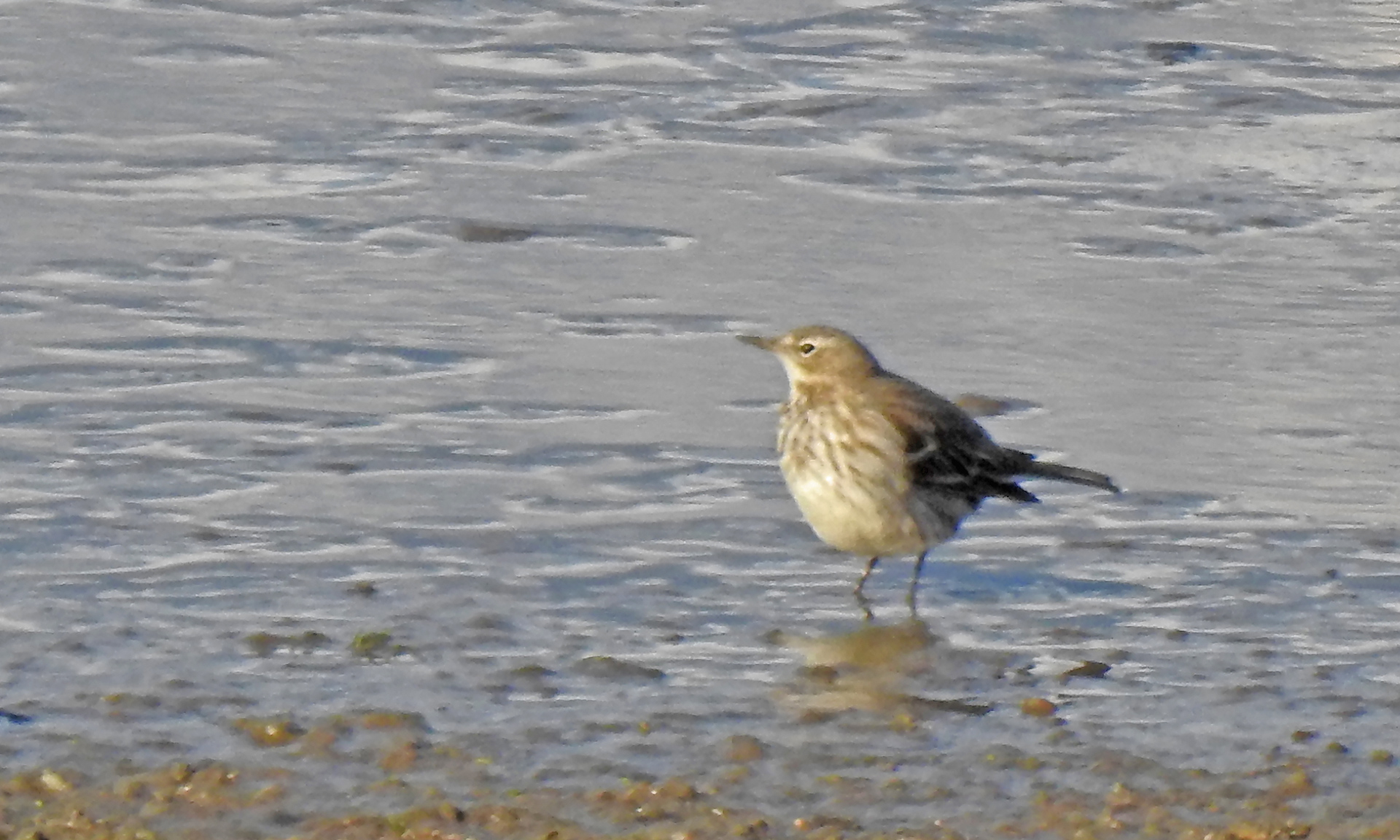
Continuing our trip several mixed flocks of finches, among which Eurasian Siskins (Carduelis spinus) and Hawfinches (Coccothraustes coccothraustes), animate the bushes on the roadside. Once on the north-eastern bank of the lake we observe dozens and dozens of Bewick’s Swans (Cygnus bewickii) grazing on the opposite bank and many ducks gathered in the middle of the lake: more than 1500 individuals of Common Pochard (Aythya ferina), species that every year here winters in large numbers.
Looking for more species in the water with the spotting scope, the last gem of the day is not long in coming and, together with Black-necked and Great Crested Grebes, we spot, even for a few moments, a female of Smew (Mergellus albellus). Enchanted by the pastel colors of the sunset that tint the waters of the lake and the nearby snow-capped mountains, we end the first half day of tour with 51 species!

DAY 2
We wake up in a good mood to take the first photo boat tour in the company of Niko and take advantage of the first morning lights to better portray the target subjects: the Pelicans. During our expeditions, for an ethical but above all a scientific question, in order not to contribute to altering the birds’ ethology, we do not use baits to bring the animals closer. In winter the Pelicans are in any case extremely confident and the possibility of taking breathtaking shots is almost guaranteed.
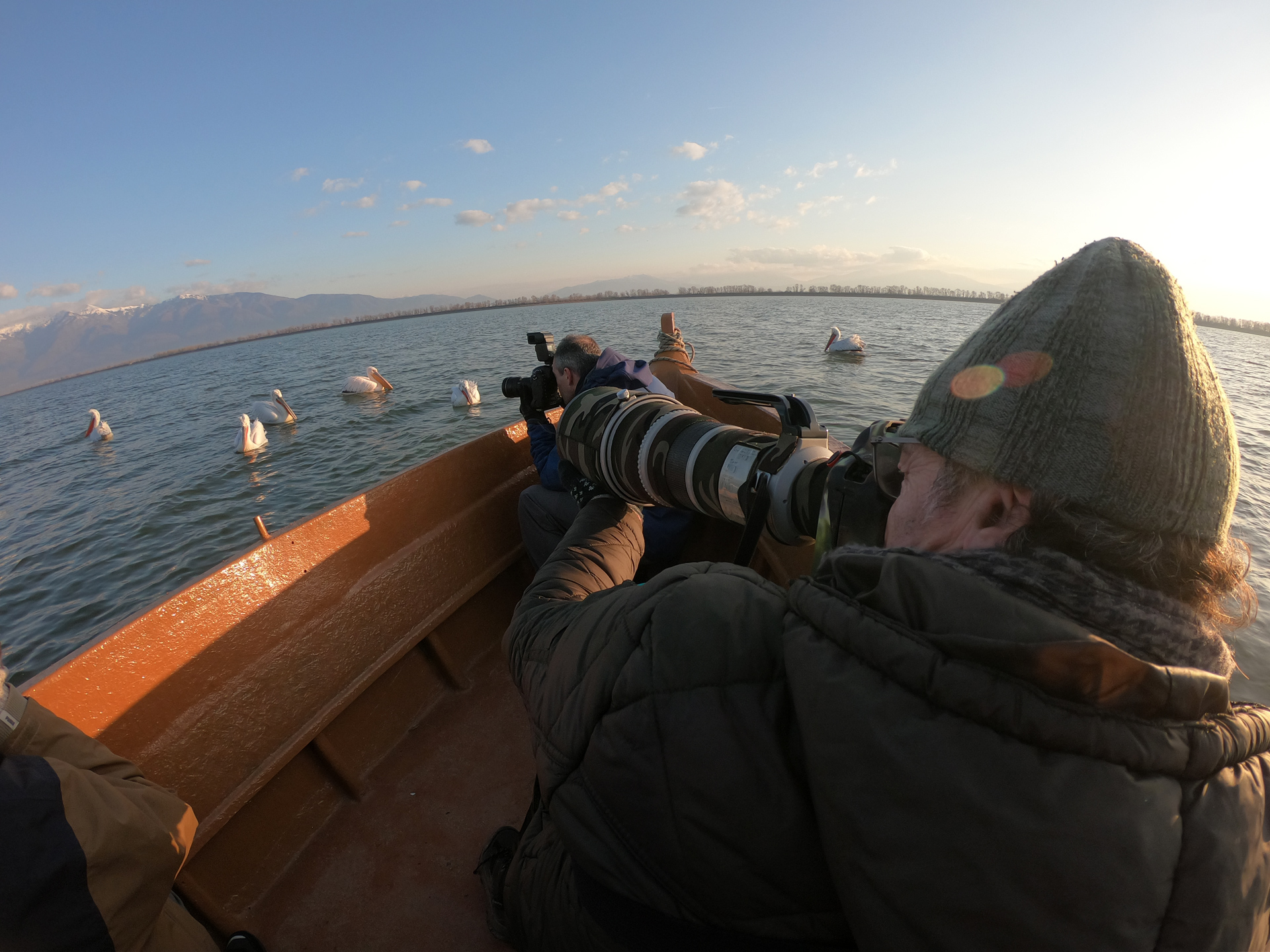
During the trip, dozens of Dalmatians Pelicans in breeding plumage show us their characteristic colored bills and the giant wingspan. 3 Great White Pelicans (Pelecanus onocrotalus) also join their cousins and are photographed at close range. Truly a great way to start the day!
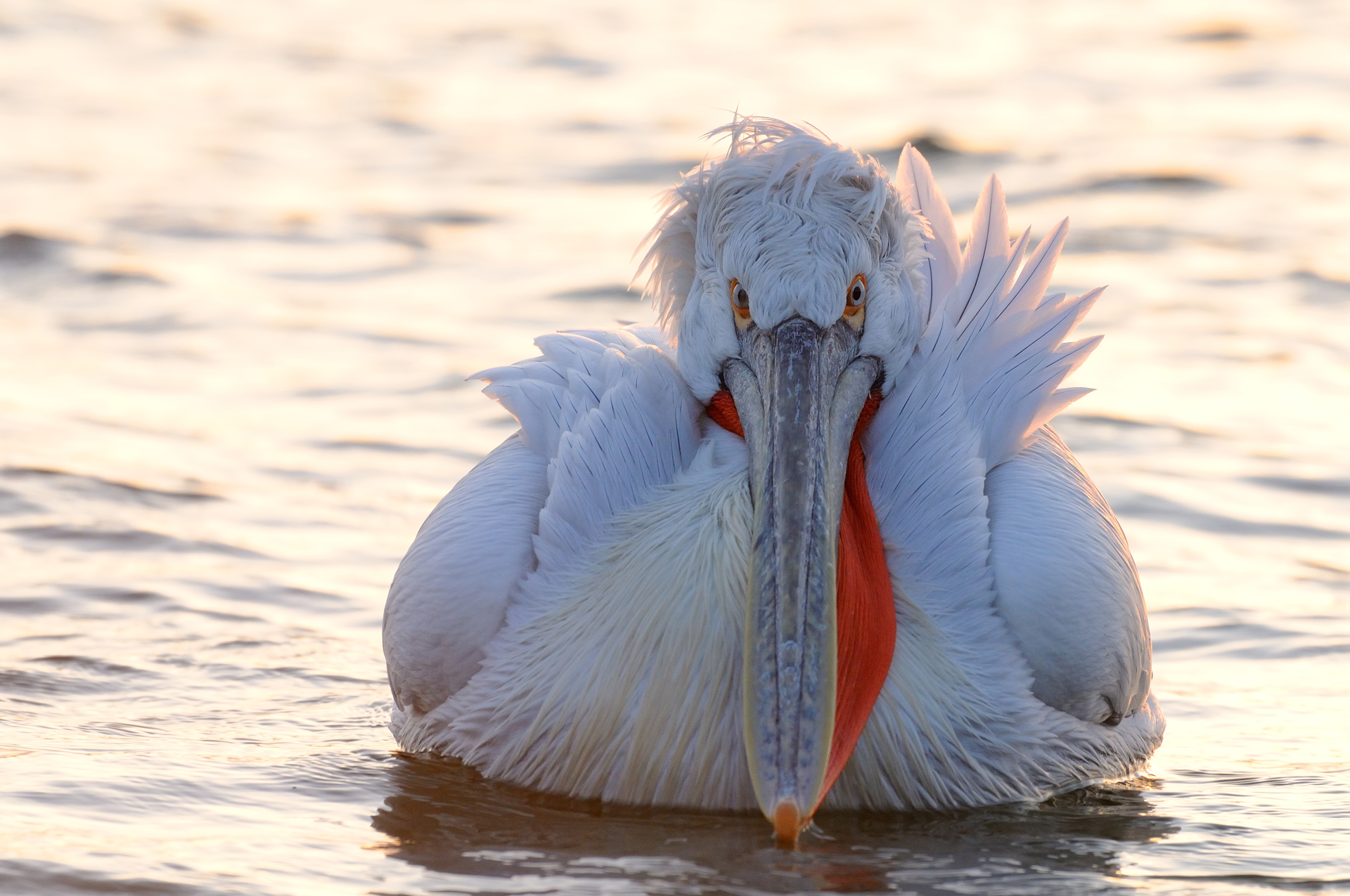
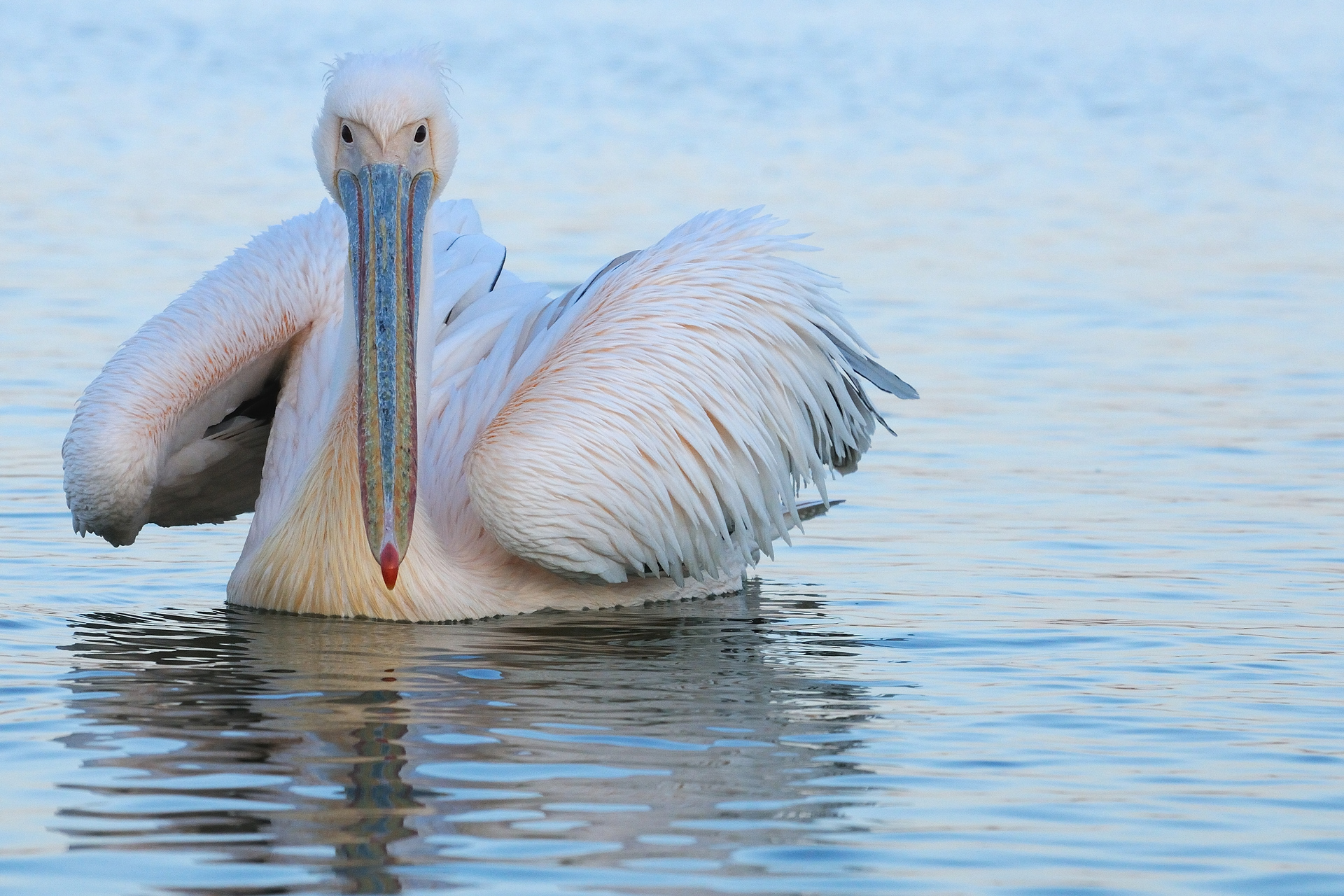

It is now time for a well-deserved breakfast and on the way back to the cottage we spot a Sombre Tit (Poecile lugubris), one of the many target species of the expedition. Once filled with energy with Dimitra’s sweet and savory delicacies, we get ready to visit the area north-east of the reservoir.
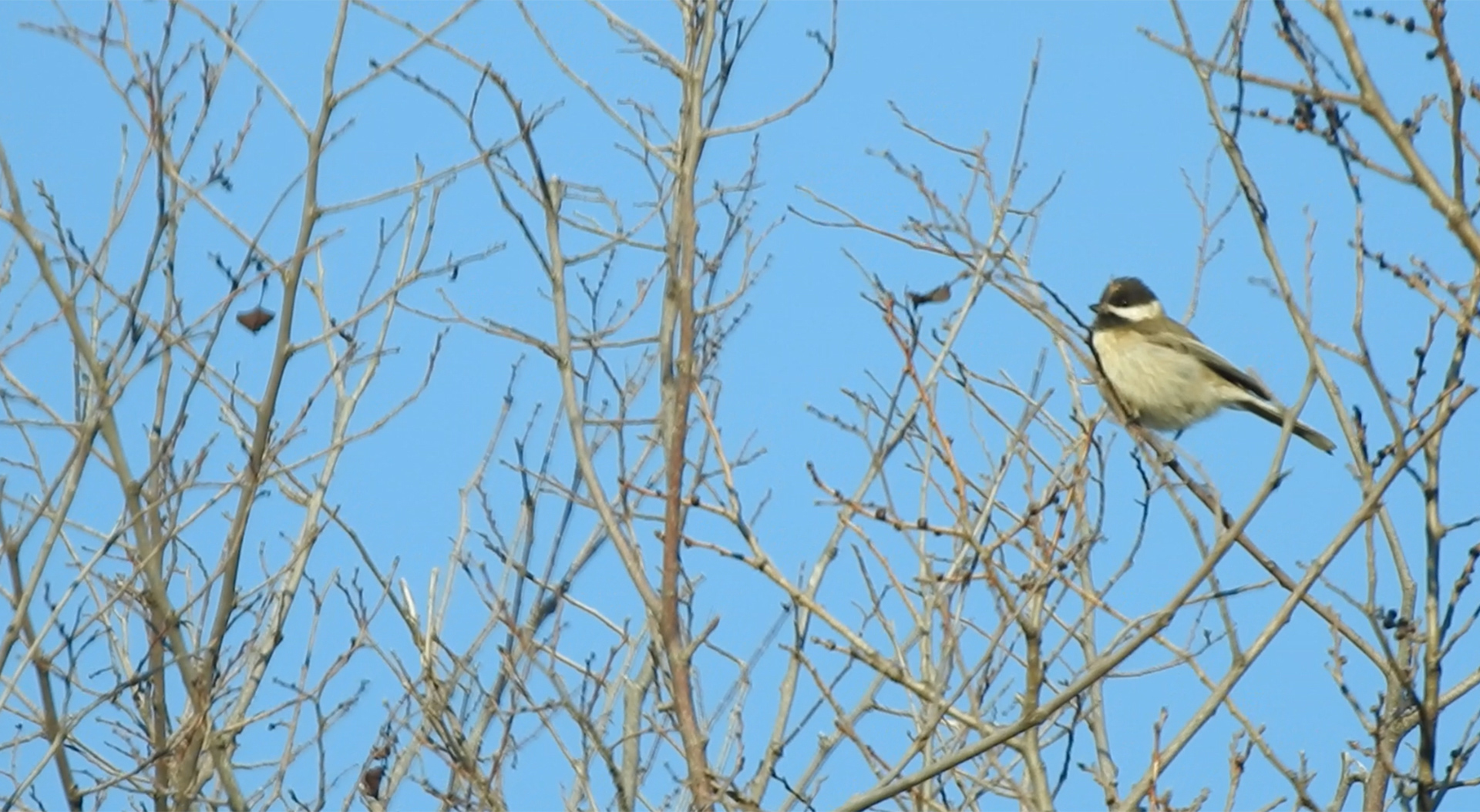
The first stop north of the lake, an observation point on the boundless dry plain used by local farmers to graze buffaloes, gives us a flock of Northern Lapwing (Vanellus vanellus), about 80 Bewick’s Swans and nothing more. So we decide to move away from the lake to investigate further environments to the east, so that we can observe also species not related to wetlands.
Along the way, unfortunately, we come across a recently invested female of Golden Jackal (Canis aureus). After some up and downs, we manage to get the animal picked up by the Park Authority and, today, we can say that we saved the life of the one we named Goldie (Read the full story here).
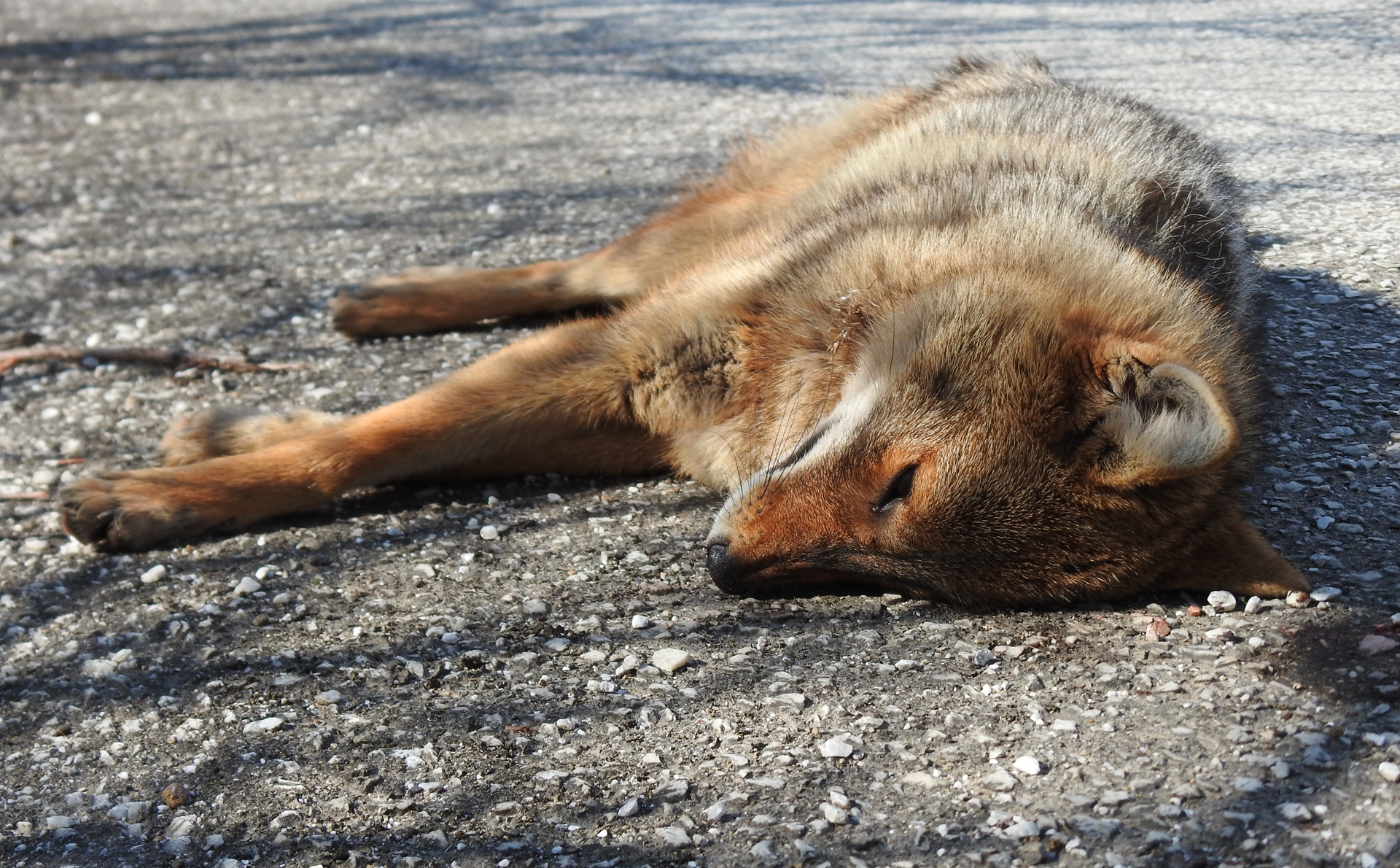
Finally we come to a riparian woodland in search of Piciforms. After a few minutes, in addition to European Green Woodpecker (Picus viridis) and Great Spotted Woodpecker (Dendrocopos major), we managed to spot a Syrian Woodpecker (Dendrocopos syriacus) and a pair of Grey-headed Woodpeckers (Picus canus). After we heas to an area of flooded meadows north of the Strymónas, where we observe a female of Hen Harrier (Cyrcus cyaneus) and multiple Great Egrets we return to Kerkini, along the river course, among cows and wild horses.
Arrived at the meeting point between the river and the lake plain, we spot multiple species, including a fair number of Greater Flamingos, Northern Shovelers (Anas clypeata) and Gadwalls (Anas strepera). We thus explore the eastern banks of the reservoir, where on a sandy islet rests a group of 10 Whooper Swans (Cygnus cygnus), in the company of Common Shelducks, Greater Flamingos, Herons and 4 Eurasian Spoonbills (Platalea leucorodia). We end the busy day with 3 Mute Swans (Cygnus olor) and about 40 Eurasian Wigeons (Anas penelope) grazing on the shore and with a dinner at Lefteris’ Taverna, consisting in buffalo meat, Kreatopita (meat pie) and other delicacies.
DAY 3
The sun has yet to rise over Kerkini and, accompanied by a singing Little Owl (Athene noctua), we head to the shores of the lake for a landscape photography session. Despite the harsh cold, we we remain enchanted by the colors and reflections that are created between some beached boats and the bank of the reservoir shore, crowded with a flock of about 30 Water Pipits, White Wigtails and Common Sandpipers. After about an hour, when the temperatures have slightly risen, an individual of Greater Spotted Eagle (Aquila clanga) flies over our heads.
After having breakfast, we move near Sidirokastro, a town characterized the Byzantine walls and the thermal springs. We park the car on the slopes of the Serres mountain massif, to explore a deciduous forest mixed with conifers. The short trek allows us to add some forest species still absent from the checklist and a pair of Common Raven (Corvus corax). On the way back, we inspect a small thermal water stream which, thanks to the high temperatures present and the luxuriant vegetation, represents an ideal nursery for hundreds of Toad (Bufo sp.) tadpoles.
Once again in Kerkini, after having made a quick visit to the large group of Bewick’s Swans still present on the shores of the lake, we head south for the second photographic excursion by boat of the tour. To accompany us this time there are Miro and Dimitri, with whom we approach an islet used as a roost site by about 50 Dalmatian Pelicans and 7 Great White Pelicans.
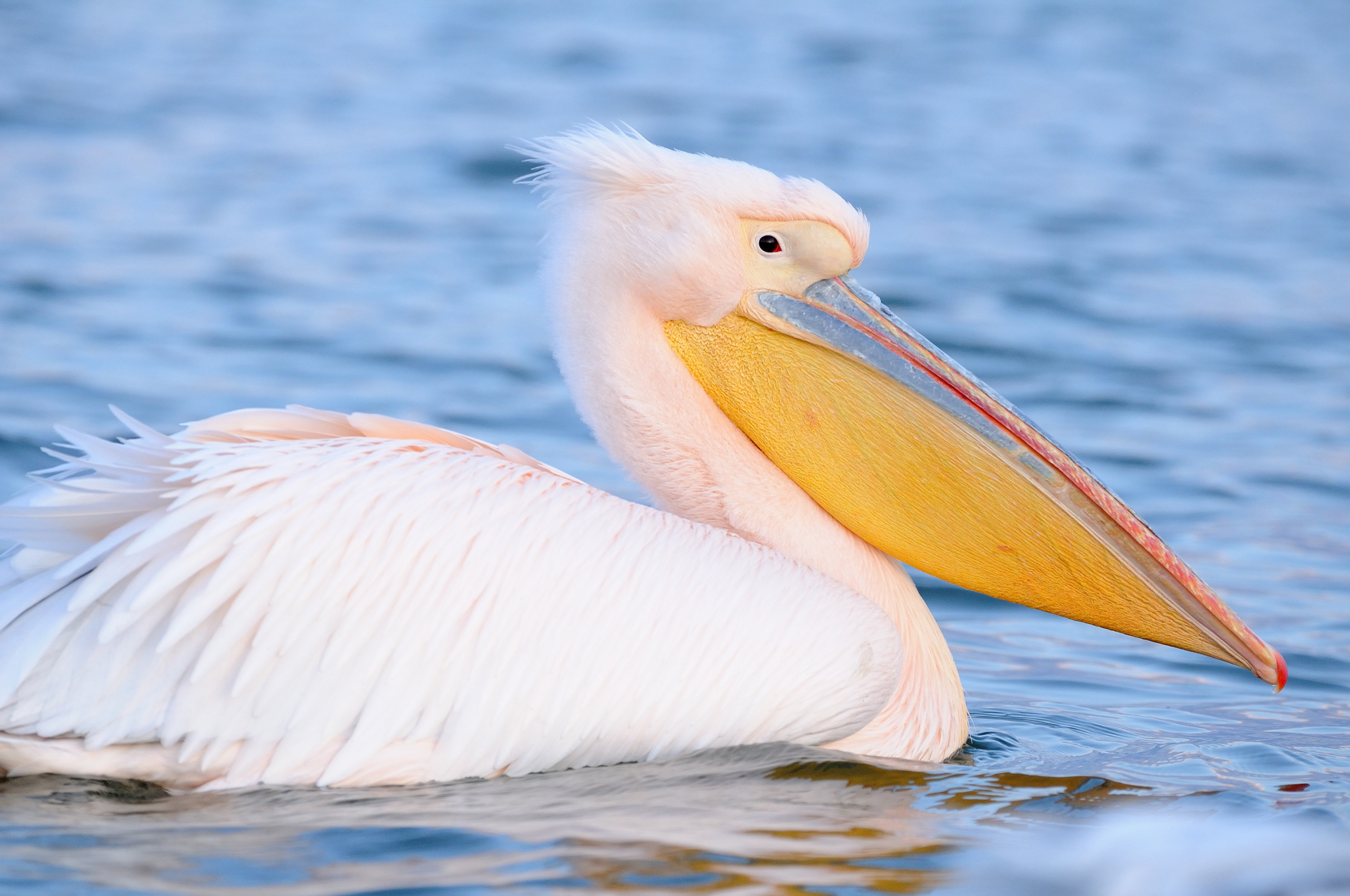
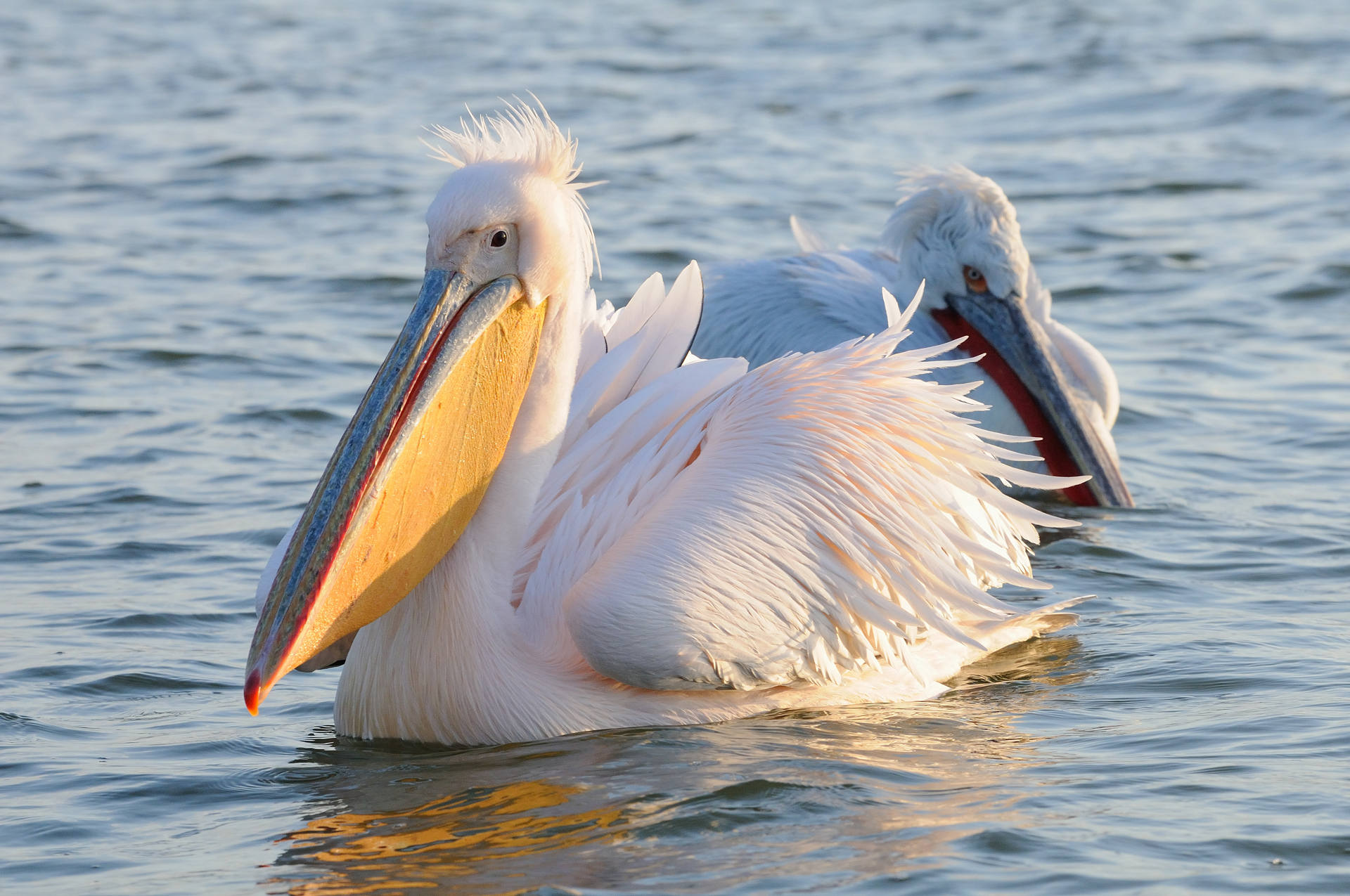
Among them some have a yellow ring, marked as part of the conservation project on the local breeding population. Looking closely at the group of pelicans, we spot a Great White Pelican with a blue ring, from another breeding colony in Greek or Romanian territory. After the photo boat tour, we entertain ourselves to observe the Pelicans hunting for the last fish, hypnotized by the full moon reflected on the waters and by the howls of the Golden Jackals on the opposite sides of the lake.
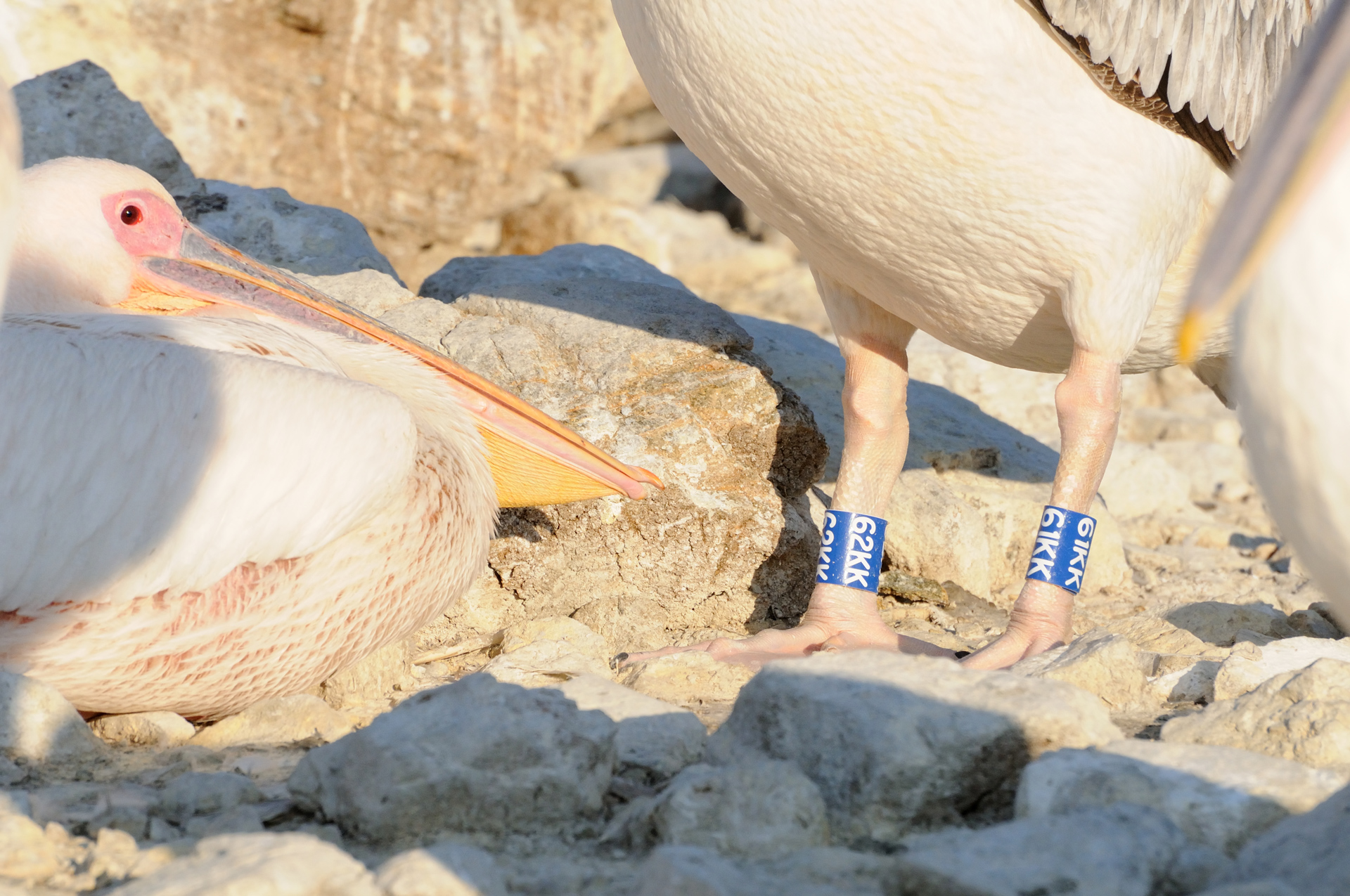
DAY 4
A flock of about 50 Hawfinches landed on the trees in front of the cottage gives us a good morning. After saying goodbye to Lake Kerkini and the stars of the trip, the Dalmatian and Greater White Pelicans, we head south to the Axios Delta National Park. This large delta complex of the Thermaic Gulf, represents one of the most interesting wetlands in the country. A few kilometers from Thessaloniki, thanks to its strategic position, it is a fixed stop for our tours giving us the possibility to replenish the checklist with species related to coastal environments.
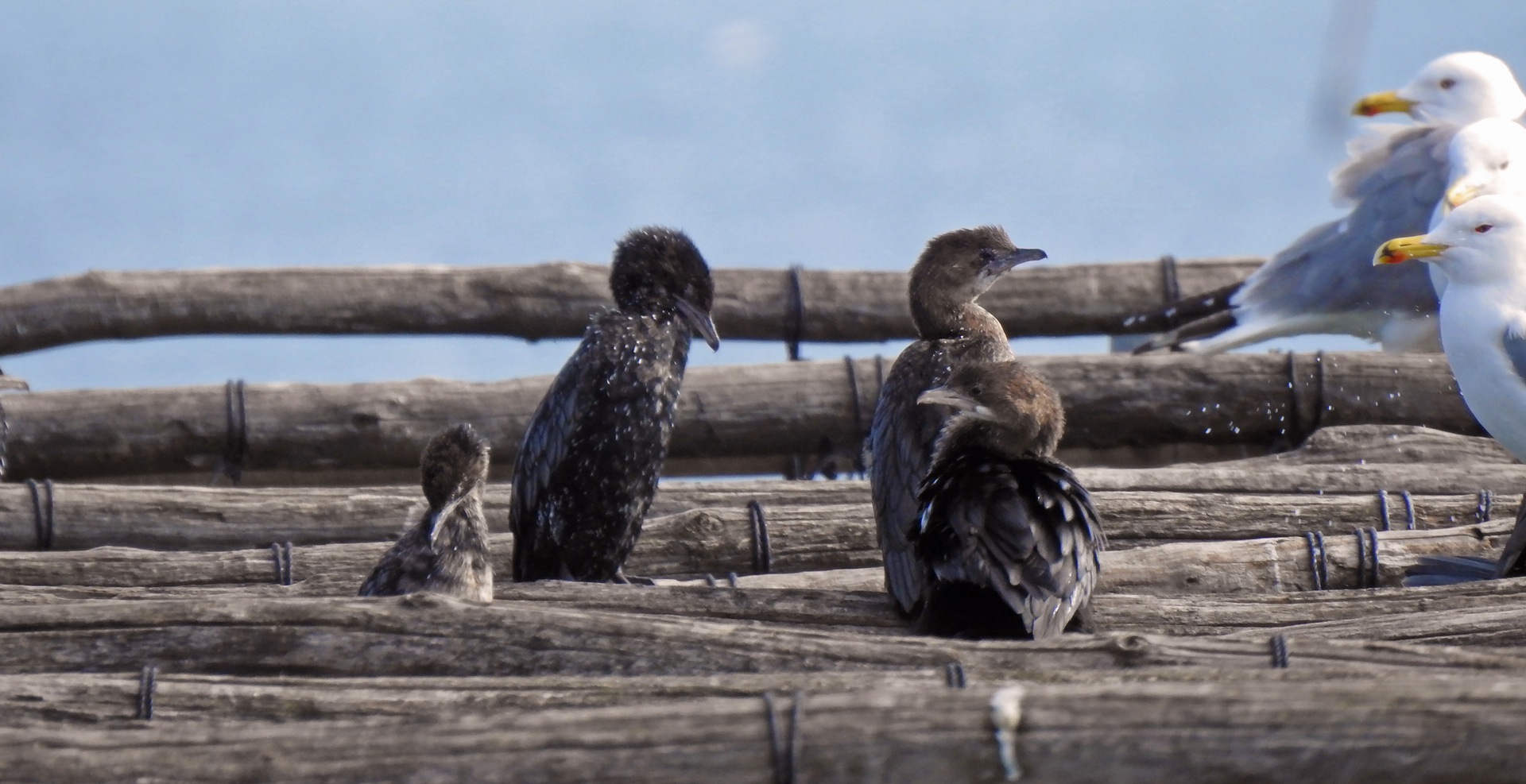
The first scheduled stop concerns the eastern side of the river mouth where, among the many species of water birds, we observe an Eurasian Curlew (Numenius arquata), two Common Redshanks (Tringa totanus) and at least 30 Pygmy Cormorants. On the way to the second observation point, some coastal ponds, we spot two Black-throated Loon (Gavia arctica) close to the coast.

The lagoons, located on the border between the delta and the peripheric area of Thessaloniki, are full of life: hundreds of Black-headed Gulls, dozens of Common Shelduck, more than 150 Pied Avocets and at least 80 Greater Flamingos. Reluctantly we have to put the equipment in the bag and return to the airport, but here comes the last surprise: 2 pairs of Red-breasted Mergans (Mergus serrator) a few meters away!

Another tour full of memories and emotions in Northeastern Greece comes to an end, a region that has remained outside from the conventional tourist circuits, which is once again confirmed as a must see for all nature lovers. We can’t wait to go back next winter!

CHECKLIST:
UCCELLI:
1. Mute Swan (Cygnus olor)
2. Whooper Swan (Cygnus cygnus)
3. Bewick’s Swan (Cygnus bewickii)
4. Common Shelduck (Tadorna tadorna)
5. Eurasian Wigeon (Anas penelope)
6. Gadwall (Anas strepera)
7. Mallard (Anas plathyrhynchos)
8. Northern Shoveler (Anas clypeata)
9. Northern Pintail (Anas acuta)
10. Eurasian Teal (Anas crecca)
11. Common Pochard (Aythya ferina)
12. Red-breasted Merganser (Mergus serrator)
13. Smew (Mergellus albellus)
14. Black-throated Loon (Gavia arctica)
15. Little Grebe (Tachybaptus ruficollis)
16. Great Crested Grebe (Podiceps cristatus)
17. Black-necked Grebe (Podiceps nigricollis)
18. Great Cormorant (Phalacrocorax carbo)
19. Pygmy Cormorant (Phalacrocorax pygmaeus)
20. Great White Pelican (Pelecanus onocrotalus)
21. Dalmatian Pelican (Pelecanus crispus)
22. Grey Heron (Ardea cinerea)
23. Great Egret (Ardea alba)
24. Little Egret (Egretta garzetta)
25. Eurasian Spoonbill (Platalea leucorodia)
26. Greater Flamingo (Phoenicopterus roseus)
27. Greater Spotted Eagle (Aquila clanga)
28. Western Marsh Harrier (Circus aeruginosus)
29. Hen Harrier (Circus cyaneus)
30. Common Buzzard (Buteo buteo)
31. Eurasian Sparrowhawk (Accipiter nisus)
32. Common Kestrel (Falco tinnunculus)
33. Common Moorhen (Gallinula chloropus)
34. Eurasian Coot (Fulica atra)
35. Black-winged Stilt (Himantopus himantopus)
36. Pied Avocet (Recurvirostra avosetta)
37. Northern Lapwing (Vanellus vanellus)
38. Common Redshank (Tringa totanus)
39. Common Greenshank (Tringa nebularia)
40. Common Sandpiper (Actitis hypoleucos)
41. Eurasian Curlew (Numenius arquata)
42. Black-headed Gull (Chroicocephalus ridibundus)
43. Yellow-legged Gull (Larus michahellis)
44. Feral Pigeon (Columba livia var. domestica)
45. Eurasian Collared Dove (Streptopelia decaocto)
46. Little Owl (Athene noctua)
47. Great Spotted Woodpecker (Dendrocopos major)
48. Syrian Woodpecker (Dendrocopos syriacus)
49. European Green Woodpecker (Picus viridis)
50. Grey-headed Woodpecker (Picus canus)
51. Crested Lark (Galerida cristata)
52. Grey Wagtail (Motacilla cinerea)
53. White Wagtail (Motacilla alba)
54. Meadow Pipit (Anthus pratensis)
55. Water Pipit (Anthus spinoletta)
56. European Robin (Erithacus rubecula)
57. Black Redstart (Phoenicurus ochruros)
58. Common Blackbird (Turdus merula)
59. Sardinian Warbler (Sylvia melanocephala)
60. Cetti’s Warbler (Cettia cetti)
61. Common Chiffchaff (Phylloscopus collybita)
62. Firecrest (Regulus ignicapillus)
63. Goldcrest (Regulus regulus)
64. Eurasian Wren (Troglodytes troglodytes)
65. Sombre Tit (Poecile lugubris)
66. Great Tit (Parus major)
67. European Blue Tit (Cyanistes caeruleus)
68. Long-tailed Tit (Aegithalos caudatus)
69. Eurasian Jay (Garrulus glandarius)
70. Common Magpie (Pica pica)
71. Western Jackdaw (Corvus monedula)
72. Hooded Crow (Corvus cornix)
73. Common Raven (Corvus corax)
74. Common Starling (Sturnus vulgaris)
75. House Sparrow (Passer domesticus)
76. Spanish Sparrow (Passer hispaniolensis)
77. Common Chaffinch (Fringilla coelebs)
78. Eurasian Siskin (Spinus spinus)
79. European Greenfinch (Chloris chloris)
80. European Goldfinch (Carduelis carduelis)
81. Common Linnet (Carduelis cannabina)
82. Eurasian Bullfinch (Pyrrhula pyrrhula)
83. Hawfinch (Coccothraustes coccothraustes)
84. Cirl Bunting (Emberiza cirlus)
85. Corn Bunting (Emberiza calandra)
MAMMALS:
1. Coypu (Myocastor coypus)
2. European Polecat (Mustela putorius) ⴕ
3. Red Fox (Vulpes vulpes)
4. Golden Jackal (Canis aureus)
AMPHIBIANS:
1. Bufo sp.
